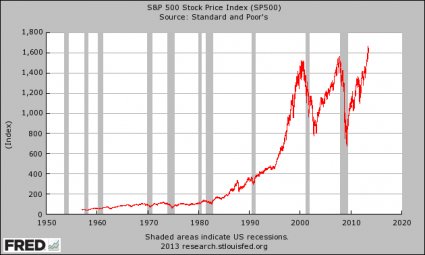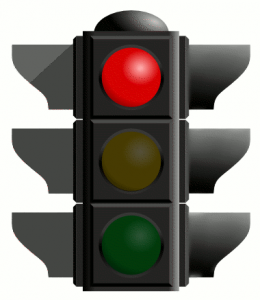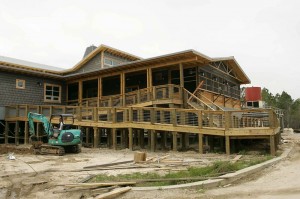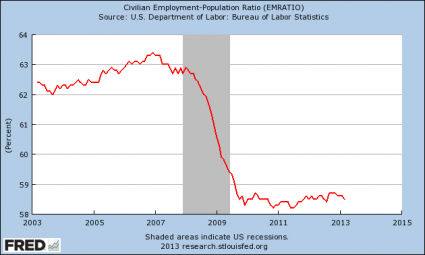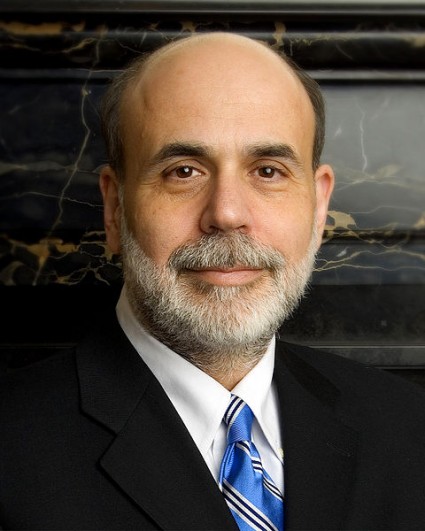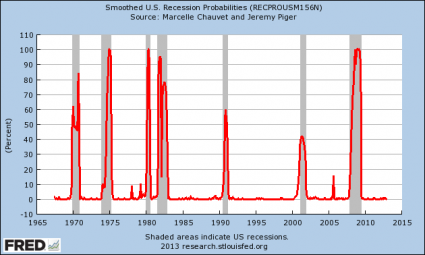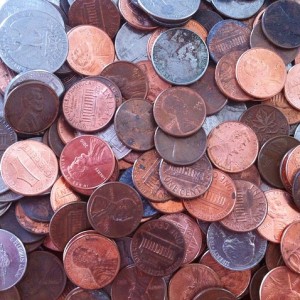 Did you know that 77 million Americans have unpaid debts that are “in collections” and that Congress is actually thinking about letting post offices offer payday loans? We live in a country where almost everyone is drowning in debt and where most people are either flat broke or very close to flat broke. Years ago, “your Mama is so broke” jokes were all the rage, and at the rate we are going they could make a big comeback. Some of my favorites were “your Mama is so broke she went to McDonald’s and put a milkshake on layaway” and “your Mama is so broke your family ate cereal with a fork to save milk”. Unfortunately, the facts that I am about to share with you are not funny at all. In fact, they are quite sobering. Yes, things are going fairly well for the elitists that live in the good areas of New York City, Washington D.C. and San Francisco right now, but most of the country is deeply struggling as our economic fundamentals continue to crumble. Please share these numbers with as many people as you can, because we need people to understand that there has not been an “economic recovery” for most of America. In fact, in many ways things just continue to get even worse. The following are 21 ways to end the phrase “Americans are so broke”…
Did you know that 77 million Americans have unpaid debts that are “in collections” and that Congress is actually thinking about letting post offices offer payday loans? We live in a country where almost everyone is drowning in debt and where most people are either flat broke or very close to flat broke. Years ago, “your Mama is so broke” jokes were all the rage, and at the rate we are going they could make a big comeback. Some of my favorites were “your Mama is so broke she went to McDonald’s and put a milkshake on layaway” and “your Mama is so broke your family ate cereal with a fork to save milk”. Unfortunately, the facts that I am about to share with you are not funny at all. In fact, they are quite sobering. Yes, things are going fairly well for the elitists that live in the good areas of New York City, Washington D.C. and San Francisco right now, but most of the country is deeply struggling as our economic fundamentals continue to crumble. Please share these numbers with as many people as you can, because we need people to understand that there has not been an “economic recovery” for most of America. In fact, in many ways things just continue to get even worse. The following are 21 ways to end the phrase “Americans are so broke”…
1. Americans are so broke that about a third of them have debt collectors on their heels. One recent study discovered that more than one out of every three adults in the United States has an unpaid debt that is “in collections“. That is a total of 77 million people. In other words, the debt collection business in America is absolutely booming.
2. Americans are so broke that Congress is now actually considering allowing post offices to provide payday loans and check cashing services.
3. Americans are so broke that they are keeping their vehicles longer than ever. The average age of vehicles on America’s roads recently set a new all-time high of 11.4 years.
4. Americans are so broke that car dealers are having to go to extreme lengths to get new customers. Last year, one out of every four auto loans in the United States was made to someone with subprime credit.
5. Americans are so broke that 52 percent of them cannot even afford the homes that they are living in right now.
6. Americans are so broke that they are falling farther behind on their student loans than ever. The total amount of student loan debt in the U.S. has now reached a whopping 1.2 trillion dollars, and approximately seven million Americans are in default on their student loans at this point.
7. Young Americans are so broke that half of all college graduates are still relying on their parents financially when they are two years out of school.
8. Young Americans are so broke that only 36 percent of American adults under the age of 35 currently own a home. That is the lowest level that has ever been recorded.
9. Americans are so broke that many of them can’t even afford to shop at Wal-Mart and dollar stores anymore…
Discount stores are slowly dying.
Yesterday, Dollar Tree announced it would buy Family Dollar, a chain that is in the process of closing hundreds of stores and firing workers.
Other discount stores have been struggling as well, writes Heidi Moore at The Guardian. Fashion discounter Loehmann’s filed for bankruptcy, while Wal-Mart’s sales have declined for the past five quarters.
“There’s just not enough money deployed by American families to keep all the discount chains in business,” Moore writes.
10. Americans are so broke that they are running up record levels of debt. Overall, U.S. households are 11.68 trillion dollars in debt right now.
11. Americans are so broke that the wealth of the “typical American household” has fallen by 36 percent over the past decade.
12. Americans are so broke that one out of every four part-time workers in America is living below the poverty line.
13. Americans are so broke that more than 37 million Americans are now being served by food pantries and soup kitchens.
14. Americans are so broke that there are 49 million Americans that are dealing with food insecurity.
15. Americans are so broke that the number of people on food stamps has increased by about 14 million while Obama has been in the White House. Ten years ago, the number of women in the U.S. that had jobs outnumbered the number of women in the U.S. on food stamps by more than a 2 to 1 margin. But now the number of women in the U.S. on food stamps actually exceeds the number of women that have jobs.
16. Americans are so broke that the U.S. government has had to spend an astounding 3.7 trillion dollars on welfare programs over the past five years.
17. Americans are so broke that more than 20 percent of all children in the U.S. are living in poverty.
18. Americans are so broke that we have a record number of kids sleeping in the streets. In fact, we have more than a million public school children that are homeless at this point.
19. Americans are so broke that 76 percent of all Americans are living paycheck to paycheck.
20. Americans are so broke that 26 percent of Americans have absolutely no emergency savings whatsoever.
21. Americans are so broke that approximately two-thirds of all Americans do not have enough money saved up to cover six months of expenses if an emergency arose.
If things are this bad now, during the so-called “economic recovery”, how bad will things get during the next major economic downturn?
Unfortunately, most Americans have been lulled into a false sense of security. The financial crisis of 2008 seems like ancient history to most of them now, and most people appear to believe that our leaders have “fixed” whatever was wrong the last time.
Of course that is not the case at all. In fact, our long-term problems have just continued to grow since then.
The truth is that what we are experiencing right now is about as good as things are going to get for the U.S. economy. When the next crisis arrives, all of the numbers in the list above are going to rapidly get a lot worse.
So enjoy the rest of this “bubble” while you still can. It certainly will not last for too much longer.


